Unusual granite culvert from 1800s is collapsing. Community wants it saved

Amateur historian Tammey McLean walked into the woods in Pembroke, near Woodstock, in search of a large stone structure from the last half of the 1800s.
This was her second attempt to find what she thought was a train tunnel. But this time, she was prepared: McLean was wearing boots and her 18-year-old son Kolby Cronkhite was with her in case she crossed paths with a bear or a moose.
As instructed by a man who had posted a photo of the "tunnel" on her Woodstock history Facebook page, a railway crossing would appear on the road, she was to park her car nearby, and follow a trail about 30 metres in.
In less than three minutes, she found herself in front of a towering stone arch built around 1870.
It was a culvert about 5½ metres tall and made of finished granite stones that fit perfectly together like puzzle pieces.
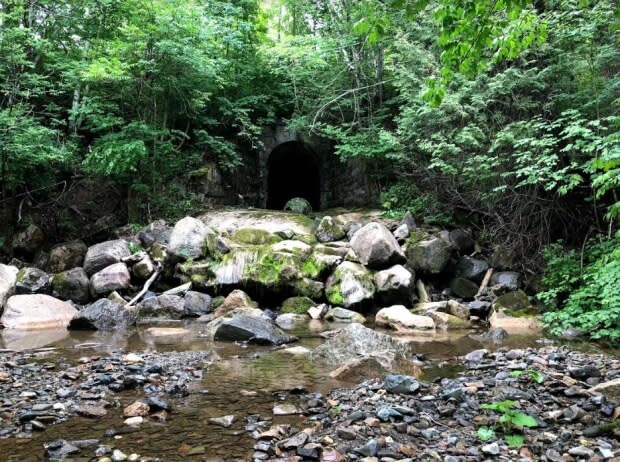
The stones near the curve had been cut in angles to form the arch, and it was easy to tell how painstaking the process must have been.
Surrounded by trees and plants, the arch culvert looked as if it belonged in an enchanted forest.
"What we saw first was a stream, and I could see the big cement boulders that were the outside of it. It was quite amazing to see," said McLean.
Except it was falling apart.
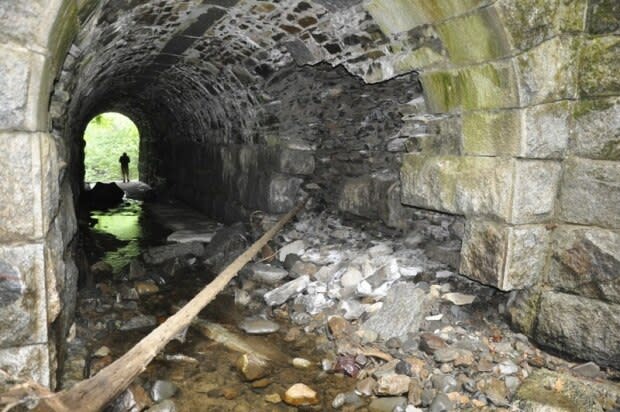
Its history
The arch culvert was part of the Gibson branch railway, called the New Brunswick Land and Railway Company, according to Paul Hanson, a retired civil servant who is a railway fanatic.
"It is not a tunnel," said Hanson. "It looks like a tunnel. But it is an arch culvert, a waterway. And any civil engineer would say it looks like a tunnel."
Built by New Brunswick industrialist Alexander (Boss) Gibson, who owned sawmills and a cotton mill in Marysville, the railway line that passed above the arch culvert would haul coal and flour, sugar, molasses and other survival supplies as well as construction tools such as nails and spikes.
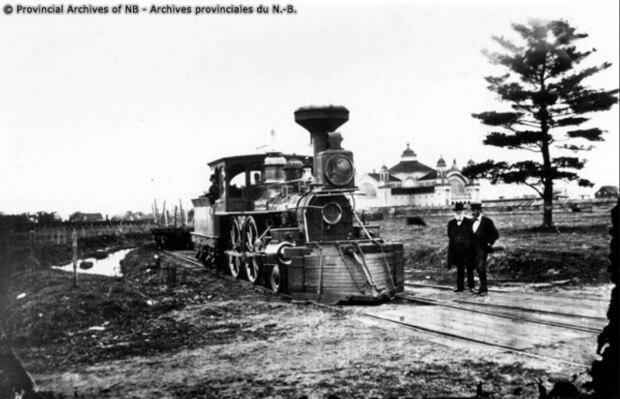
The Canadian Pacific Railway eventually bought the Gibson line and countless others in New Brunswick, then abandoned them around Jan. 1, 1995, as the company abandoned the East Coast.
As happened along other old railway beds in New Brunswick, the tracks above the culvert were pulled up and replaced by a trail. Today, it carries hikers as well as ATV and snowmobile riders, most oblivious to the beautiful structure coming apart beneath them.

Falling apart
Pembroke resident Kevin McKell is a railway buff who has explored almost every trail line in New Brunswick. He lives with his wife Shirley Sewell McKell in a farm that surrounds the stone arch.
According to McKell, it wasn't common back then to build such an elaborate culvert over a stream.
"Just the cement work and stone work in those times, I think it would have taken a year to build, just to do the masonry work," he said.

Hanson is also amazed by the architecture that went into the structure.
"They did better work back then than what we are doing right now, and they did not have the machinery, " he said.
"All the blocks had to be cut out of granite and it had to be engineered."
'There is concern'
McKell said he and other nearby landowners have watched the degradation of the culvert over the past 10 years and are concerned now about an imminent collapse.
Granite stones have become dislodged and the ceiling is falling. Heavy rains and high freshets send damaging debris under the arch.
"It would be devastating if that collapsed," McKell said. "There are some homes and some businesses just below. There is concern."
He said in the springtime, the water from Shaw's Brook, which runs through the culvert, is high and moves at a fast pace. If the structure collapses "that would fill up and then we would have a lot of water and we don't know where it would go and what damage could come from."
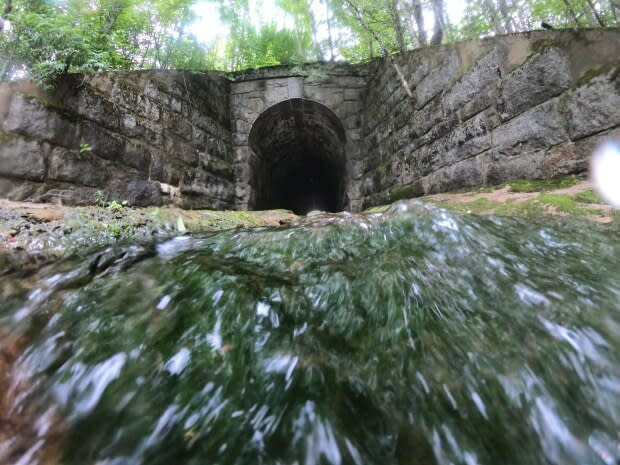
McLean said she's trying to find someone who can help her restore the culvert.
"It is a piece of history that should be taken care of," she said.
Who's responsible?
The arch is the responsibility of the Department of Natural Resources and Energy Development.
No one was available for an interview, but a written statement sent to CBC News said the department is aware of the situation and was requesting an engineering assessment of the site.
"Should it be determined from engineering assessments that the structure failures pose a public risk, the department will take steps to close the trail segment to protect the public."
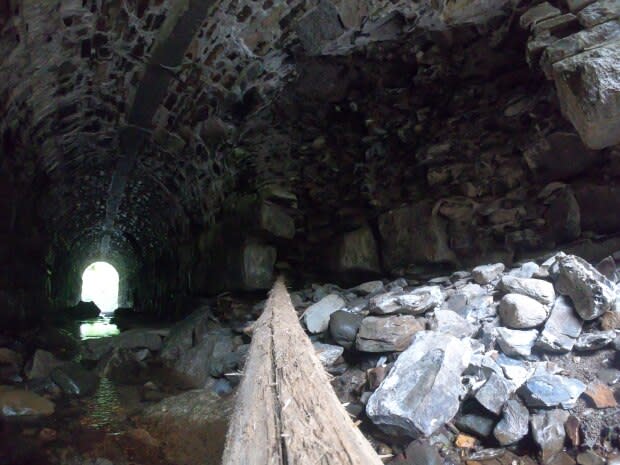
Take care of history
No train has crossed the tracks that used to lie above the arch since 1987, but people who grew up in the area know the culvert's there.
Some have messaged McLean to share stories of when they played nearby and to agree with her that it should be restored.

That hot summer day that McLean and her son walked to the culvert, they spent quite some time there taking photos and exploring the ins and outs of the structure.
"You have to learn to preserve history," she said. "If you don't preserve history, there won't be anything for the rest of the people to see."


